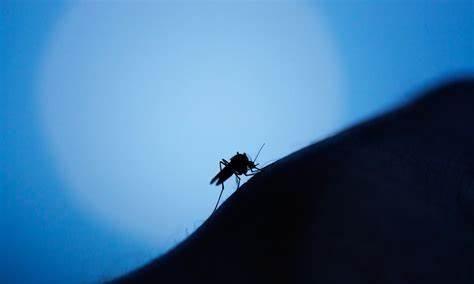Mosquitoes (Culicidae) are a globally distributed insect known for sucking blood and spreading diseases. In warm seasons, mosquitoes are active and cause trouble to people. However, after entering winter, people often find that mosquitoes seem to "disappear". So, do mosquitoes die in winter or hibernate? This article will discuss in detail the physiological characteristics of mosquitoes, how they survive in winter, and the adaptation strategies of different types of mosquitoes, and answer people's common questions.

The life cycle of mosquitoes includes four stages: egg-larvae (wrigglers)-pupa-adult. In a warm environment, this process can be completed in 7-14 days, allowing mosquitoes to reproduce rapidly.
Eggs: Usually laid on the water surface or in a humid environment, they can hatch into larvae.
Larvae (mosquito larvae): Live in water and rely on the air on the water surface for breathing.
Pupae: A short dormant stage, followed by emergence into adults.
Adults: Female mosquitoes suck blood for nutrition, and lay eggs again after reproduction is complete.
Mosquitoes are cold-blooded animals, and their physiological activities are greatly affected by the ambient temperature:
Above 15°C: Mosquitoes can still move normally.
10-15°C: Activity decreases, foraging and reproduction slow down.
Below 10°C: Most mosquitoes enter hibernation or die.
Due to the lower temperature in winter, the activity of mosquitoes has dropped significantly, but they will not completely die out, but adopt different strategies to survive.
Not all mosquitoes will die in winter. Different types of mosquitoes adopt the following strategies in the cold season:
Adult mosquito hibernation (diapause): Some female mosquitoes find a warm and hidden place and enter a "diapause" state similar to hibernation.
Egg dormancy (diapause eggs): The eggs of some mosquito species are cold-resistant and can survive in low-temperature environments and hatch in spring.
Larvae and pupae survive in water: The larvae and pupae of some mosquitoes can grow slowly in low-temperature water bodies and only emerge as mosquitoes when the temperature rises.
Therefore, mosquitoes will not completely die out in winter, but will wait for the warming of spring through various adaptation methods.
Female mosquitoes of some mosquito species (such as Culex spp.) hibernate in the following environments:
Basements, attics, wall cracks
Tree holes, rotten wood, leaf piles
Sewers, damp caves
These mosquitoes enter a slow metabolic hibernation, stop sucking blood, and rely on the energy stored in their bodies to maintain life. Once the temperature warms up, they will wake up and resume activities.
The eggs of some mosquitoes (such as Aedes spp., such as dengue mosquito Aedes aegypti) have strong resistance to cold. The eggs laid by female mosquitoes in autumn can withstand low temperatures and can even survive below zero degrees for several months. When the temperature rises in spring and the water surface forms, the eggs will quickly hatch and start a new life cycle.
The larvae of some species of mosquitoes (such as Anopheles spp., malaria mosquitoes) can grow slowly in cold water without dying immediately. These larvae will quickly develop into adults after the ice melts in spring.
The main way of survival is to hibernate as adult mosquitoes or cold-resistant eggs.
Female mosquitoes hibernate in warm shelters, and male mosquitoes mostly die in autumn.
Cold-resistant mosquito eggs hatch in the spring of the following year.
Due to the high temperature, mosquitoes can reproduce all year round and do not hibernate.
These areas have a higher risk of transmission of mosquito-borne diseases (such as malaria and dengue fever).
In winter, human heating systems and water pipes provide suitable living conditions, allowing some mosquitoes to stay indoors all year round.
For example, heating rooms, greenhouses, and water accumulation in basements can all become breeding grounds for mosquitoes.
Although the number of mosquitoes will decrease in winter, taking measures to reduce their survival rate can effectively reduce the outbreak of mosquitoes in the spring of the following year.
Since mosquito eggs and larvae rely on water bodies to survive, regularly cleaning up stagnant water (such as flower pot trays, sewers, and tire water) is one of the most effective mosquito prevention measures.
To prevent mosquitoes from hibernating, you can take the following measures:
Clean basements, attics and storage rooms to prevent mosquitoes from hiding.
Treat potential hiding spots with mosquito spray or insecticide.
Most mosquitoes will freeze to death if the room temperature is below 10°C, so reducing the heating area can reduce the chances of mosquitoes surviving.
Although most mosquitoes go dormant or die in winter, they may still survive in indoor environments heated by humans. Heated rooms, greenhouses, basements and other environments may provide a temperature suitable for mosquitoes to survive, allowing them to continue to move and reproduce.
Yes, low temperatures will kill most adult mosquitoes, especially male mosquitoes. However, some female mosquitoes hibernate, and mosquito eggs and larvae may survive and hatch in the spring. Therefore, relying solely on cold weather cannot completely eliminate mosquitoes.
When the temperature is below 10°C, most mosquitoes will enter a dormant state and stop sucking blood. However, in a warm indoor environment (such as a heated room), mosquitoes may still remain active and continue to bite humans to suck blood.
In summary, mosquitoes will not all die in winter, but will adopt different strategies to survive, including hibernation of adult mosquitoes, overwintering of cold-resistant eggs, and slow development of larvae in water. AlthoughMosquito activity decreases during the winter, but indoor environments may still support mosquito survival. With proper mosquito prevention measures, people can effectively reduce the impact of mosquitoes in the following spring, thereby reducing the risk of mosquito-borne disease transmission.
animal tags:
We created this article in conjunction with AI technology, then made sure it was fact-checked and edited by a Animals Top editor.